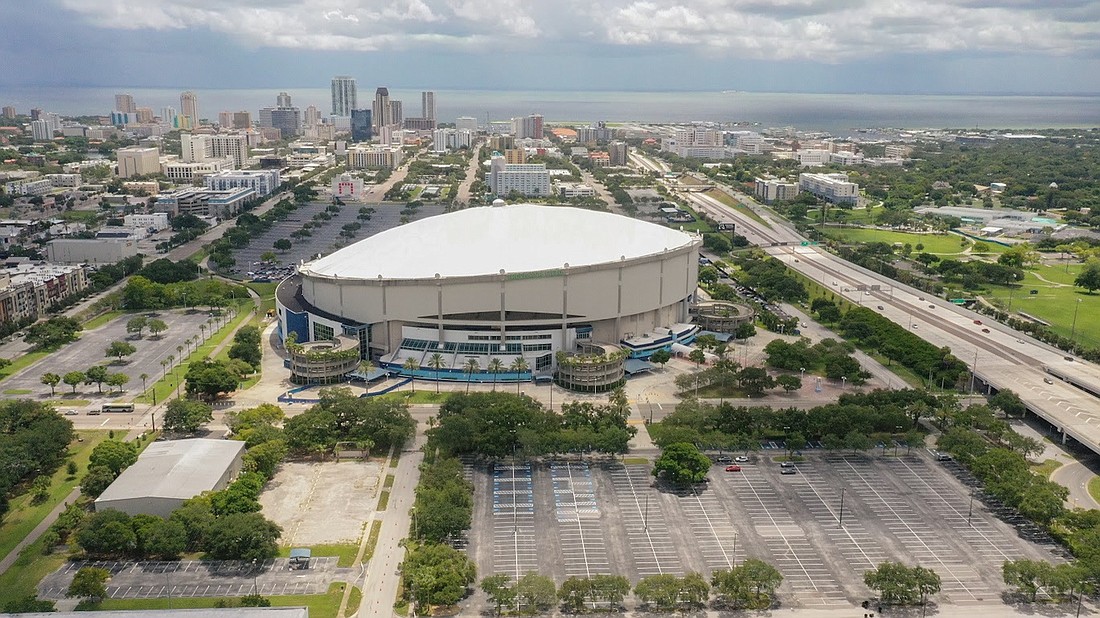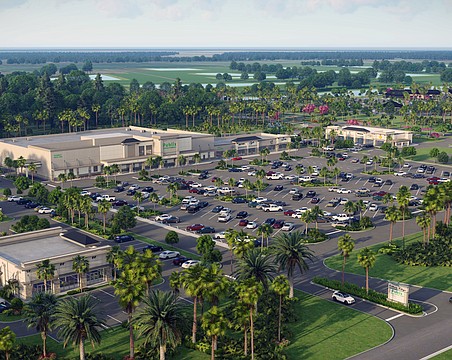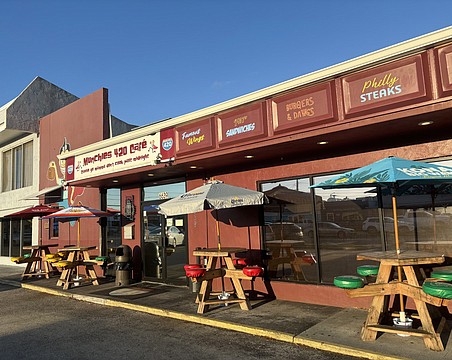The seven proposals that have been submitted to St. Petersburg officials to revamp Tropicana Field and its surrounding acreage offer vastly different ideas on how to move forward.
The seven teams that responded to a city request for proposals last month also differ widely in regards to the amount of detail and the level of depth presented, according to a review of the submissions.
City officials were explicit last year in seeking proposals that would not only revitalize the 85-acre, municipally owned parcels with stores, offices, hotel rooms and open space, but that would also bridge a cultural and civic divide that split South St. Petersburg when highways were built and the stadium was completed in 1990.
The city also sought proposals that would include a new baseball stadium on the site and ideas on how to supplant it should the Tampa Bay Rays decide to play elsewhere following the 2027 Major League Baseball season, when the team’s lease with the city expires. To date, the city and the team appear to be no closer in negotiations to remain in their current location.
Hence, the redevelopment appears to be of paramount importance to the city, which has been recognized internationally for its work on the new $93 million St. Pete Pier and other urban planning initiatives.
“The importance of this site to the future of St. Petersburg can’t be over-emphasized,” the city states on its website. “It’s a once-in-a-generation chance to create new opportunities for growth, economic development and an enhanced community.”
Of the seven teams that have submitted to revitalize the property, three have significant local ties — a team comprising Portman Holdings and Third Lake Partners and Echelon, both of St. Petersburg; Sugar Hill Community Partners, which includes JMA Ventures of San Francisco, Machete Group, Blue Sky Communities, St. Petersburg’s Backstreets Capital and J Square Development and local Stantec personnel; and TRS Development Services, whose team is made up of the Tampa offices of Ryan Cos. Inc. and Brennan Investment Group.
The other four proposals come from companies based in Orlando, Miami and Altamonte Springs.
Each proposal envisions developments of $2 billion or more on the property, which would generate millions of dollars in new taxes and thousands of new jobs for residents.
In each of the scenarios, development teams were asked by the city to provide economic forecasts for their proposals spanning 20 years.
A few of the proposals say they hope to re-unify a community that was bifurcated more than three decades ago through physical assets and social developments.
When Interstates 275 and 175 and the domed baseball stadium were constructed, for instance, the traditionally African-American “Gas Plant District,” as it was known, lost more than 250 buildings, 500 homes, dozens of businesses and nine churches.
“Our emphasis is on breaking down the physical and metaphysical barriers that have unjustly deprived the African-American community and heritage of St. Petersburg,” Miami-based Midtown Development LLC states in its proposal.
Midtown Development would build “Creekside” together with Warharft Group, the Pinellas County Urban League, Place Architecture and others, according to its 243-page proposal.
That 15-member team also has pledged to develop 1,000 low-to moderate-income residential units in Creekside, devote roughly $30 million to building parks and other open spaces, and construct 30 new city blocks on 50 acres.
At a projected $3.75 billion, its project also anticipates the largest development.
Sugar Hill Community Partners says its work will provide a “transformative impact on St. Petersburg for generations to come” through a $3.1 billion collection of commercial real estate and affordable housing that would add between 5.4 million square feet and 7.5 million square feet of space to the site.
“Our design will re-invigorate the community with lasting, sustainable and lively places that result in a culturally diverse, layered neighborhood,” Atlanta-based Portman Holdings and Third Lake Capital’s proposal indicates.
Its potential $2.6 billion project would require 34 years to reach build out and generate an estimated 17,700 permanent new jobs.
Wendover Housing Partners of Altamonte Springs, by contrast, contends providing new affordable housing on the Tropicana Field site should be the top priority.
“We are living in a time where rental prices are high and the supply of affordable housing is insufficient to meet the needs of current demand,” Wendover writes in its proposal.
Its $2.4 billion development plan, which would take 15 years to complete, would add nearly 2,000 new residences — 1,286 of which would be deemed “affordable” based on resident income levels and other criteria.
Although each proposal accentuates re-invigorating Booker Creek, which bisects the property, and creating significant open space per the city’s directive, Orlando-based Unicorp National Developments Inc. plan is aimed at “celebrating nature, the arts and healthy living.”
Its project, through a team with Tampa-based Feldman Equities LLC and 10 others, would find a “balance between density and the need for a great public space.”
With Booker Creek, it would emulate canal attractions in cities like Paris, San Antonio and The Hague. In all, 40% of the total site would remain as open space and its tallest structure would rise just 20 floors, its proposal states.
Unicorp’s plan also would be the first to be realized: Its three-phase build out would occur over nine years.
The centerpiece of TRS Development’s Sky Wave plan would be a trio of high-rise, luxury residential towers — of 45, 47 and 50 stories — and a retrofitted Tropicana Field, which would be converted into a 28,000-seat, open-roofed stadium.
It also envisions a 12-story, 600,000-square-foot intermodal hub with a 1,500-space parking garage.
SROA Capital’s designs call for 16 new buildings on the property, in addition to a new ballpark. The West Palm Beach company’s $2.67 billion plan, which would be developed over 19 years, would seek municipal funding for “all horizontal infrastructure,” an expense that would add hundreds of millions of dollars to the project’s cost. Wendover’s plan also seeks city financing for infrastructure work.
SROA’s plan also calls for the eventual removal of Interstate 175, whereas, Sugar Hill describes a potential “re-imagining” of the highway’s ramps within the site.
The city, for its part, has pledged a minimum of $75 million to pay for infrastructure, though developers also could expect to receive tax or other breaks because the property is in a federally designated Opportunity Zone and lies within a Community Redevelopment Area that would allow special financing.
“The Tropicana Field site represents a development opportunity unlike any other in the Southeast,” the city noted in RFP.






